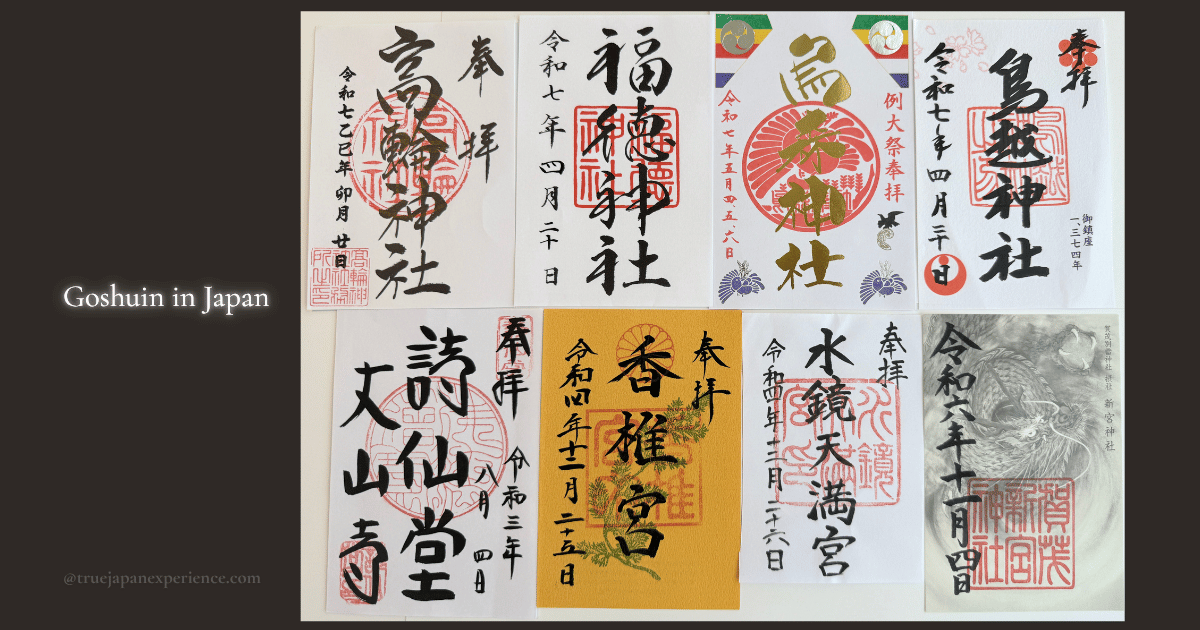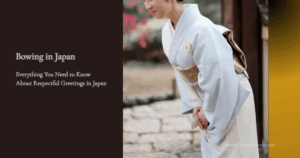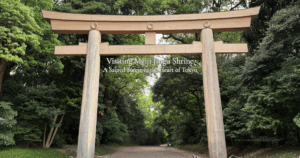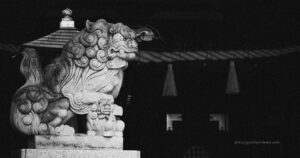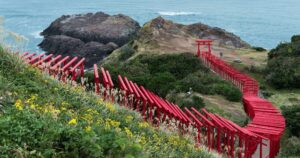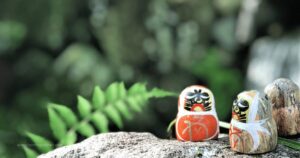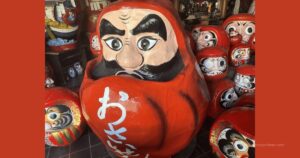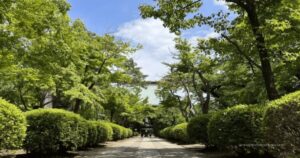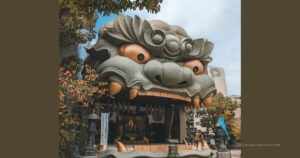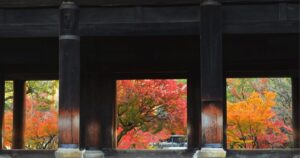In Japan, you’ll often see visitors holding beautiful books as they approach a small window at a shrine or temple. What they’re receiving isn’t a stamp for tourists—it’s a Goshuin, a sacred seal that represents their respectful visit.
More than just a travel memento, Goshuin connect you to centuries of Japanese tradition. This guide explains what they are, how to receive them properly, and how to enjoy collecting them while respecting the culture.
What Is a Goshuin?
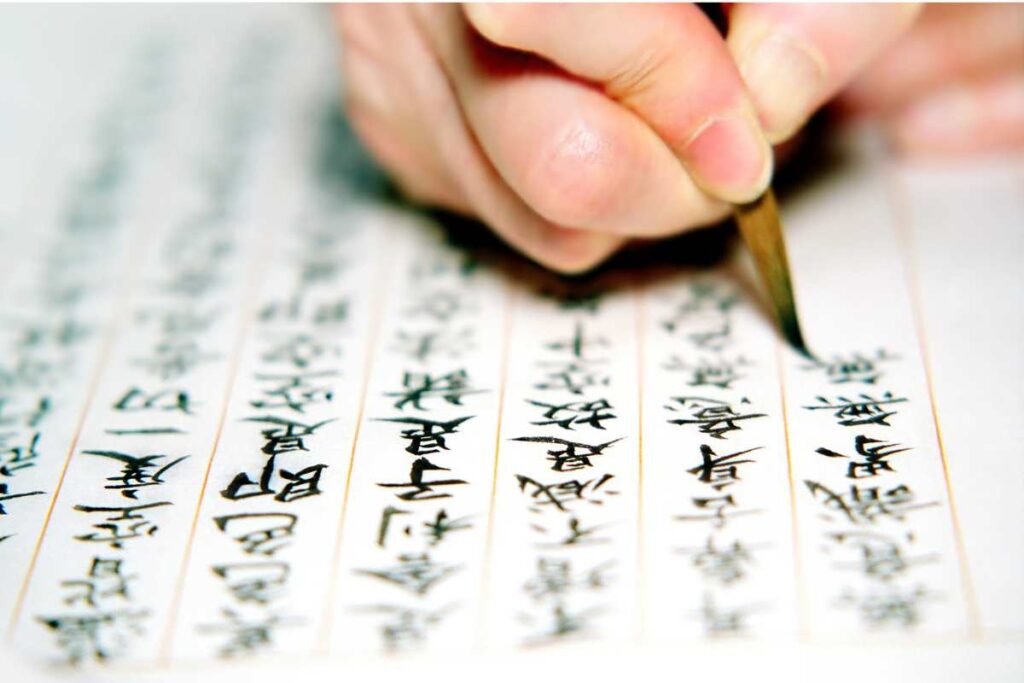
Copying Buddhist sutras, which were traditionally offered in temples and marked with a seal as proof of devotion.
Goshuin (御朱印) are artistic seals given at shrines and temples across Japan. Traditionally, they were used to certify that a visitor had copied and offered Buddhist sutras—a practice known as nōkyō.
Over time, as the line between Buddhism and Shinto blended, shrines also began offering Goshuin to those who prayed respectfully.
Today, anyone—Japanese or foreign, religious or not—can receive a Goshuin as a sign of their visit. It’s a beautiful reminder of your experience and an invitation to understand Japan’s spiritual heart.
Goshuincho vs. Nokecho: The Special Books
While both Goshuincho and Nokecho are used to collect sacred seals at temples and shrines, they serve slightly different purposes—especially when it comes to pilgrimages.
A Goshuincho is the general-purpose stamp book used when visiting a variety of temples and shrines across Japan. The pages are typically blank or subtly bordered, allowing you to receive Goshuin from different places in any order you like.
In contrast, a Nokecho is used specifically for formal pilgrimages such as the Shikoku 88-temple route or the Saigoku Kannon Pilgrimage. Each temple on the route has a designated page already printed with its name, and sometimes a sacred poem (御詠歌). The Nokecho functions as a structured spiritual record, meant to be filled out only at the designated pilgrimage sites.
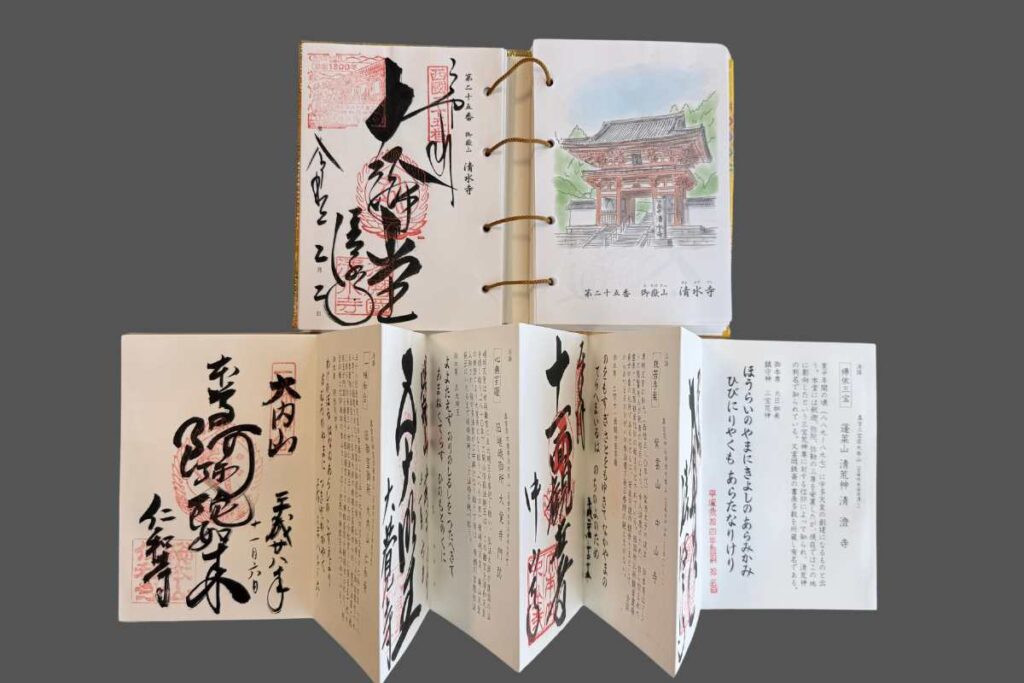
Notebook-style and accordion-style Nokecho, both used in temple pilgrimages.
Here are the key differences between the two:
・Usage: Goshuincho is used for general shrine and temple visits. Nokecho is intended for use during organized pilgrimages.
・Structure: Goshuincho features blank or flexible pages. Nokecho has pre-assigned pages for specific temples.
・Purpose: Goshuincho serves as a personal collection book. Nokecho records acts of devotion, especially the offering of sutras.
・Stamping practice: In some cases, a Nokecho may allow multiple seals on the same page over time—something rarely done in a Goshuincho.
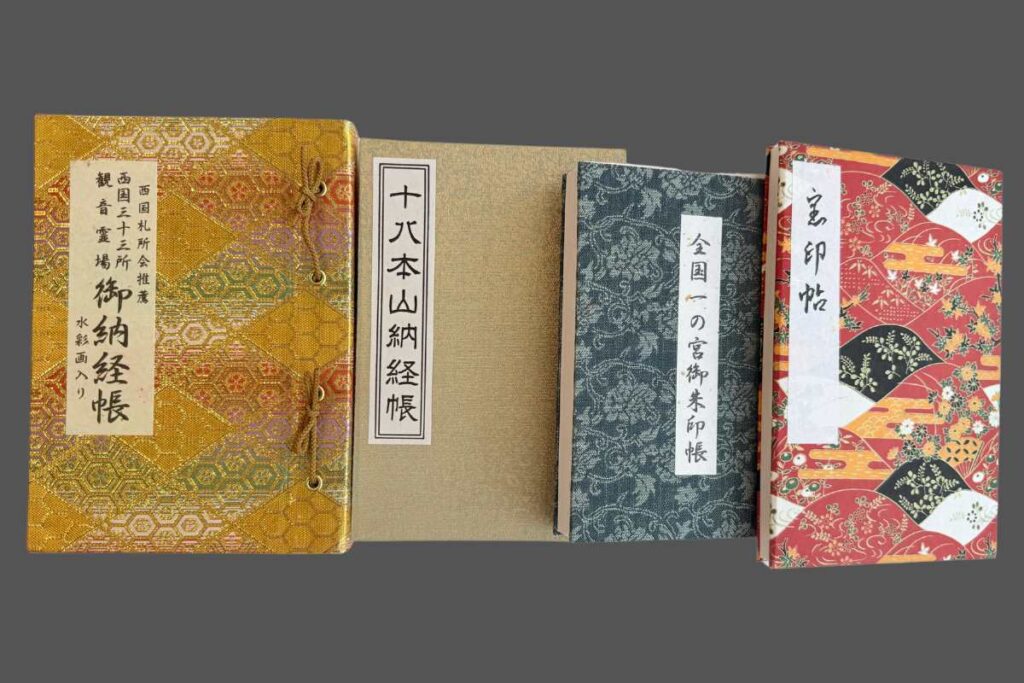
Two Nokecho on the left and two Goshuincho on the right—showing differences in size, pattern, and purpose.
If you’re planning a pilgrimage and will be offering sutras at designated temples, a Nokecho is the proper choice. For all other purposes—including casual travel and cultural exploration—a Goshuincho is more than sufficient.
The distinction between Goshuincho and Nokecho is closely tied to Japan’s historical blending—and later separation—of Shinto and Buddhism.
If you’re curious about this background, you can learn more here:
👉 Shrines vs. Temples in Japan: What’s the Difference?
Goshuin Etiquette: Do’s and Don’ts for First-Timers
Receiving a Goshuin is more than just collecting a stamp—it’s an interaction rooted in centuries of religious and cultural tradition. While the process is open to all respectful visitors, there are certain expectations and customs to be aware of when participating in this practice.
Whether it’s your first time or you’ve already started your Goshuin journey, understanding the proper way to receive one—and what to avoid—can help you engage with this tradition in a more thoughtful and meaningful way.
Let’s begin with how the process works, step by step.
How to Receive a Goshuin: Step-by-Step Guide
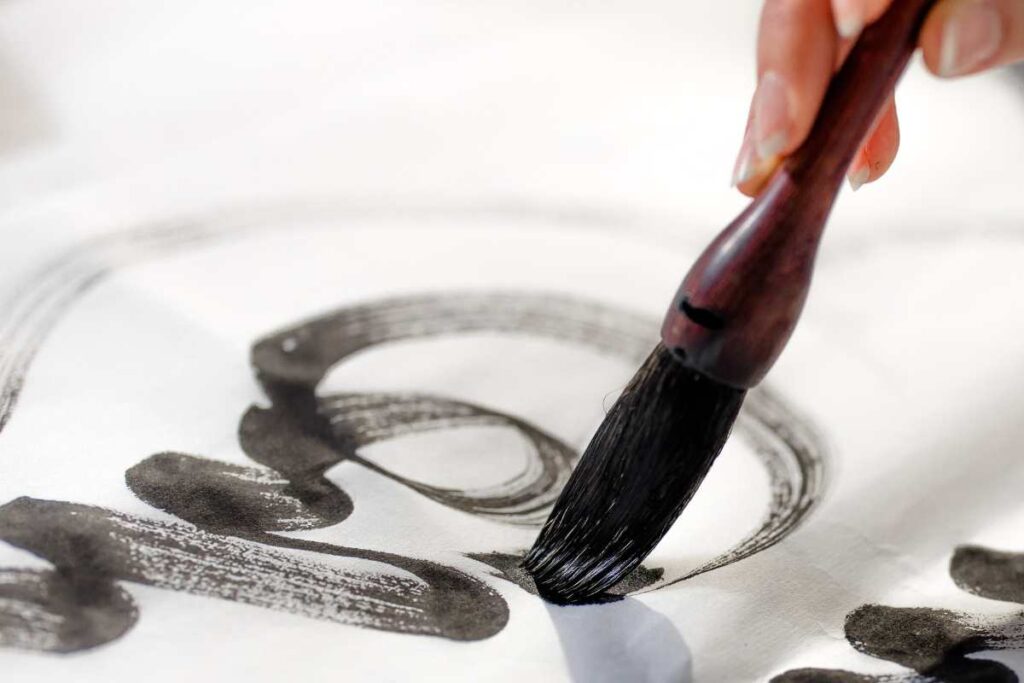
Receiving a Goshuin is simple, but the process is rooted in respect.
Here’s how it usually works:
・First, offer a prayer at the main hall of the shrine or temple
・Then go to the Goshuin reception counter (often called 授与所 or 納経所)
・Politely say “Goshuin, onegaishimasu” (ご朱印お願いします)
・Hand over your Goshuincho, opened to a blank page
・Wait quietly while the priest or monk writes it
・Pay the fee—in most cases, ¥300 to ¥500 is standard—and try to prepare small coins to avoid the need for change
While most Goshuin follow the typical ¥300–¥500 range, you may occasionally come across different systems. Some temples and shrines use the phrase “okokoro de,” which means the amount is left to your discretion. In these cases, the fee is not fixed, so it’s respectful to prepare a suitable offering in coins.
You might also encounter shrines or temples that offer multiple types of Goshuin, especially during festivals or limited-time events. Seasonal designs, intricate artwork, or embroidered paper versions can sometimes cost ¥1,000 or even more. Always check the signage or ask the staff if you’re unsure about the fee or options available.
You don’t need to speak perfect Japanese. A simple smile and polite bow go a long way.
And if you’re not sure where to go, look for a sign that says “御朱印” or “Goshuin” in English.
Etiquette When Requesting a Goshuin
When receiving a Goshuin, it’s important to approach the process with respect and humility. While the custom is open to anyone, it is still considered a spiritual exchange—not just a tourist activity.
Start by offering a quiet bow or polite greeting. Then hand over your Goshuincho, opened to the page where you’d like the seal written. Speaking softly and avoiding small talk during this moment is a way to show reverence and gratitude.
If you’d like to take a photo or video of the writing process, it’s best to ask first. A quick “Photo OK?” or simple gesture goes a long way, and most places will appreciate your thoughtfulness.
It’s also important not to make requests about the way the Goshuin is written. Don’t ask for certain characters, styles, or say things like “Can you make it look like this picture?” Every seal is handwritten, and each one is meant to be unique. Expecting it to look exactly like someone else’s version defeats the spirit of the practice.
One more thing to avoid is asking someone else to collect a Goshuin for you. These seals are meant to be given to those who have actually visited and prayed at the site. Similarly, buying or selling Goshuin online is strongly discouraged and seen as disrespectful to the tradition.
In short, receiving a Goshuin is not just about collecting ink on paper—it’s about recognizing the value of presence, prayer, and respect for sacred places.
Helpful Tips for a Smooth Visit
To make your Goshuin experience smoother and more respectful, especially if it’s your first time, here are a few helpful tips based on both common practices and personal experience.
Using a small bookmark or tab to mark the next blank page is a thoughtful gesture. When it’s your turn at the reception desk, it’s polite to hand over your Goshuincho opened to the page you’d like the seal written on. This not only speeds up the process but also shows consideration for the staff and those waiting behind you.
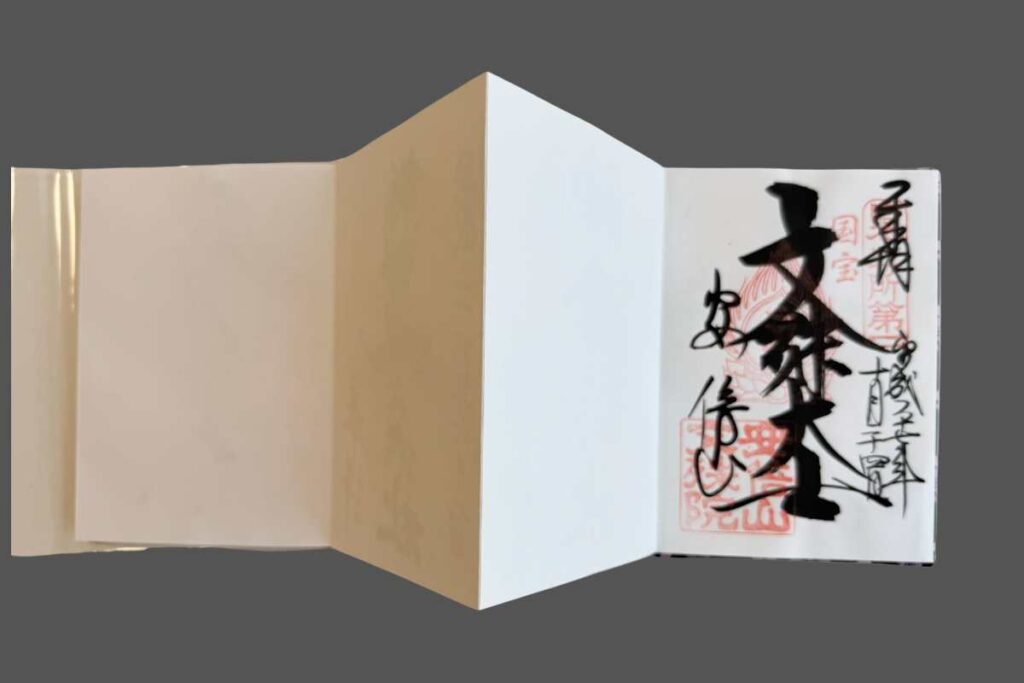
The ink on the reverse side can sometimes show through, as seen here. If that bothers you, consider using only one side of each page.
Some people choose to write only on one side of each page, especially in accordion-fold books. This is to avoid ink bleeding through from the front to the back, or vice versa. That said, many Goshuincho are designed to allow both sides to be used, and it’s completely acceptable to do so. It really comes down to personal preference—there is no right or wrong.
Most Goshuin cost between ¥300 and ¥500, so it’s a good idea to carry plenty of coins when you’re visiting multiple sites. If you only have bills, don’t worry—staff can usually give you change.
You may also come across occasional practices or beliefs among collectors. For example, some people prefer to leave the first page of their Goshuincho blank, saying they want to reserve it for Ise Jingu, one of Japan’s most revered shrines.
However, this is not an official custom or widely followed tradition. In fact, many people—including myself—start right from the first page. Unlike pilgrimage books, Goshuincho have no designated order or rules, so how you use yours is entirely up to you.
The most important thing is to approach the practice with sincerity and respect. Whether your Goshuincho is meticulously organized or casually filled as you travel, the experience is meant to be meaningful—never stressful.
What’s Inside a Goshuin?
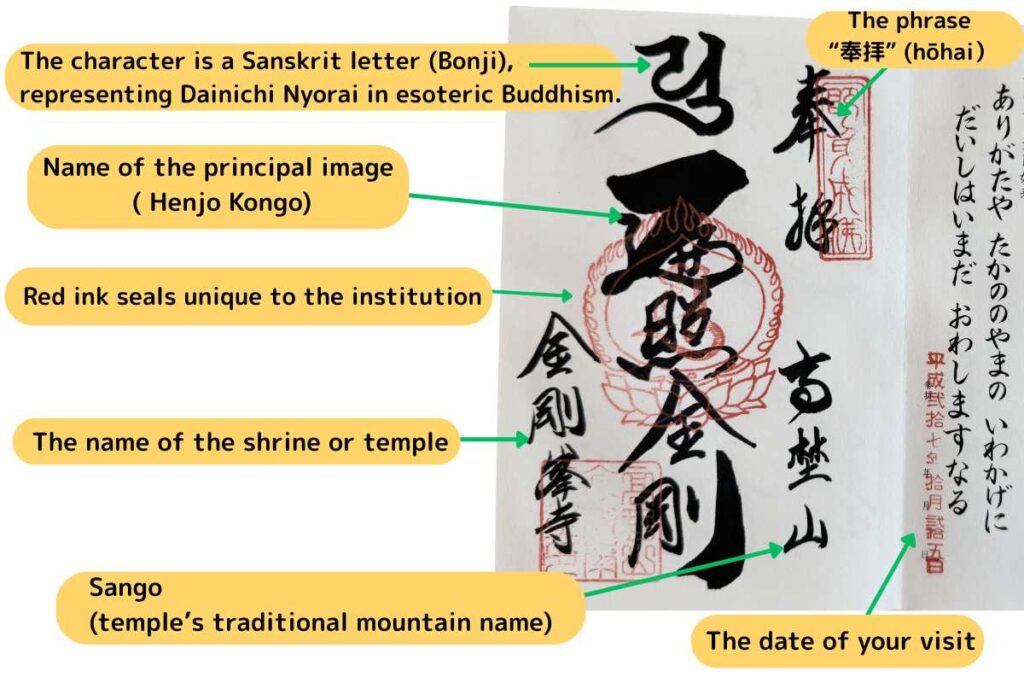
An example of a Goshuin showing the temple name, red stamps, and the word “Hōhai” written in calligraphy.
A Goshuin is not just a stamp—it’s a carefully composed piece of calligraphy and symbolic marks that reflect the sacred nature of the place you visited. While the exact content varies depending on whether you visit a shrine or a temple, there are a few elements commonly included in both.
Common Elements in Most Goshuin
These components are written or stamped with careful attention, turning each Goshuin into a one-of-a-kind spiritual record.
Specific to Shrines
At Shinto shrines, the focus is often on the name of the enshrined deity (kami) and the unique red seals of the shrine. The design tends to be simple and elegant, emphasizing purity and reverence.
Specific to Temples
At Buddhist temples, the Goshuin may be more detailed and symbolic. In addition to the temple name and seals, it might include the name of the principal Buddha (本尊, honzon), the sect or school, and sometimes a sango (mountain name) or a pilgrimage number, especially if the temple is part of a formal route.
In pilgrimage contexts, goeika (poetic verses) are sometimes printed in the nokecho (pilgrimage stamp book) itself, but they are not typically included in the Goshuin.
These details give temple Goshuin a slightly more narrative or doctrinal tone than those from shrines.
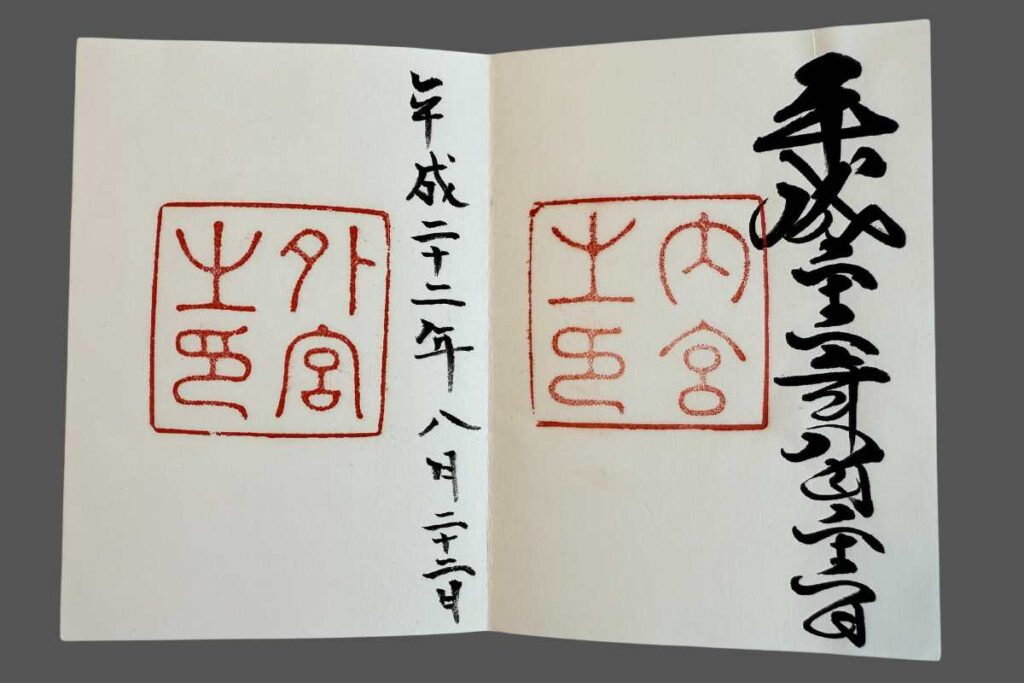
Simple Goshuin from Ise Jingu’s Inner and Outer Shrines—featuring only the shrine seal and visit date.
While many Goshuin are richly decorated with calligraphy and seals, some shrines and temples offer a simpler version that includes only a red seal and the date of visit. This minimalist style reflects a different aesthetic—often emphasizing purity or formality. For example, Ise Jingu is known for its clean and dignified design.
Choosing and Protecting Your Goshuincho
Choosing the right Goshuincho is an important part of enjoying your Goshuin journey. With so many designs and formats available, it’s worth taking a moment to find one that suits your travel style and personal taste.
Once you have your book, keeping it in good condition—especially while on the move—ensures that each Goshuin you receive stays as beautiful as the moment it was written.
Types of Goshuincho Binding and Formats
The format of your Goshuincho can affect how you use and store it. The three main styles are:
Choose one based on your travel needs and how you plan to use or display your collection.
How to Protect and Store Your Goshuincho
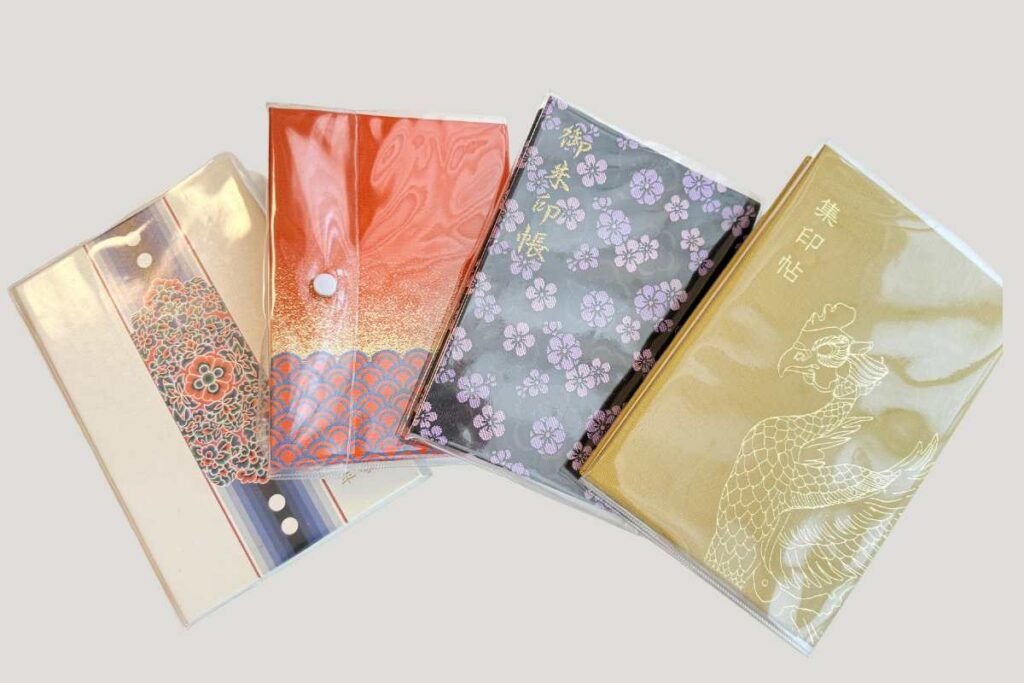
A Goshuincho protected by a transparent vinyl cover—helpful for preventing stains and wear.
To keep your Goshuincho in good condition, it’s important to protect it from moisture, scratches, or bending during your travels.
・Use a clear vinyl cover to shield it from rain
・Store it in a cloth pouch or zip bag when placing it in your backpack or purse
・Keep it in a dry, dust-free place when not in use
When offering your book at a shrine or temple, it’s best to remove the cover before handing it over. Covers can make the book harder to open and may interfere with the writing process. Removing it in advance shows courtesy and consideration.
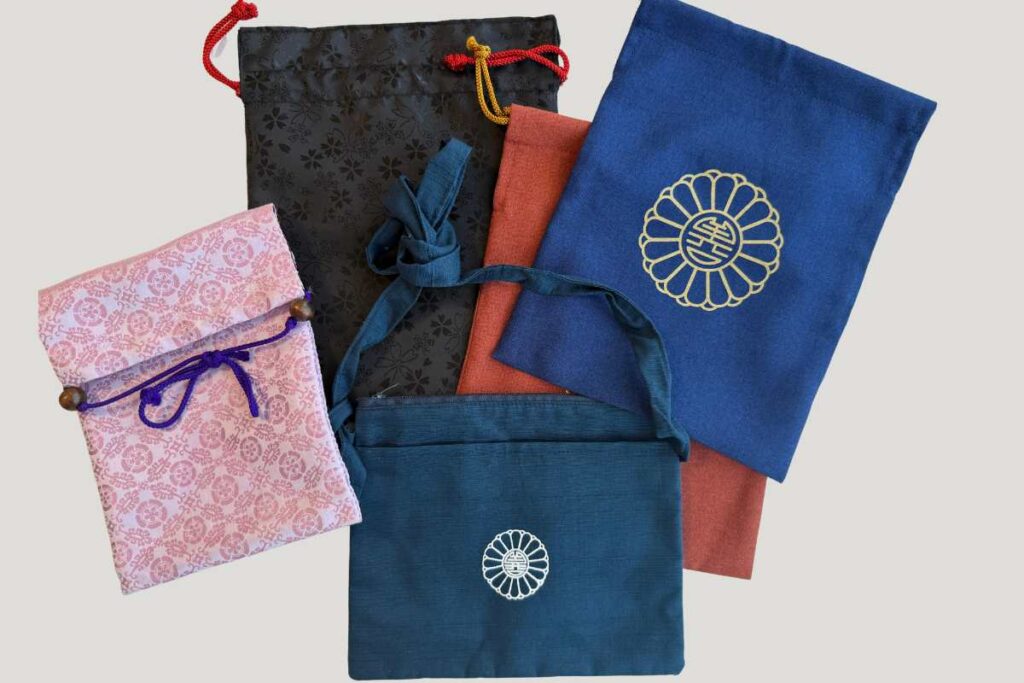
Goshuincho pouches come in various sizes, patterns, and materials, all designed to protect the book.
There are also beautiful cloth pouches designed specifically for Goshuincho. Exploring different styles and finding one that suits your taste can make the experience even more enjoyable.
Well-maintained books are not only beautiful—they show respect for the spiritual value they hold.
Should You Separate Books for Shrines and Temples?
There’s no official rule requiring you to use separate Goshuincho for shrines and temples. Since Goshuin are meant to mark your respectful visit, not your religious affiliation, it is generally acceptable to collect both in a single book.
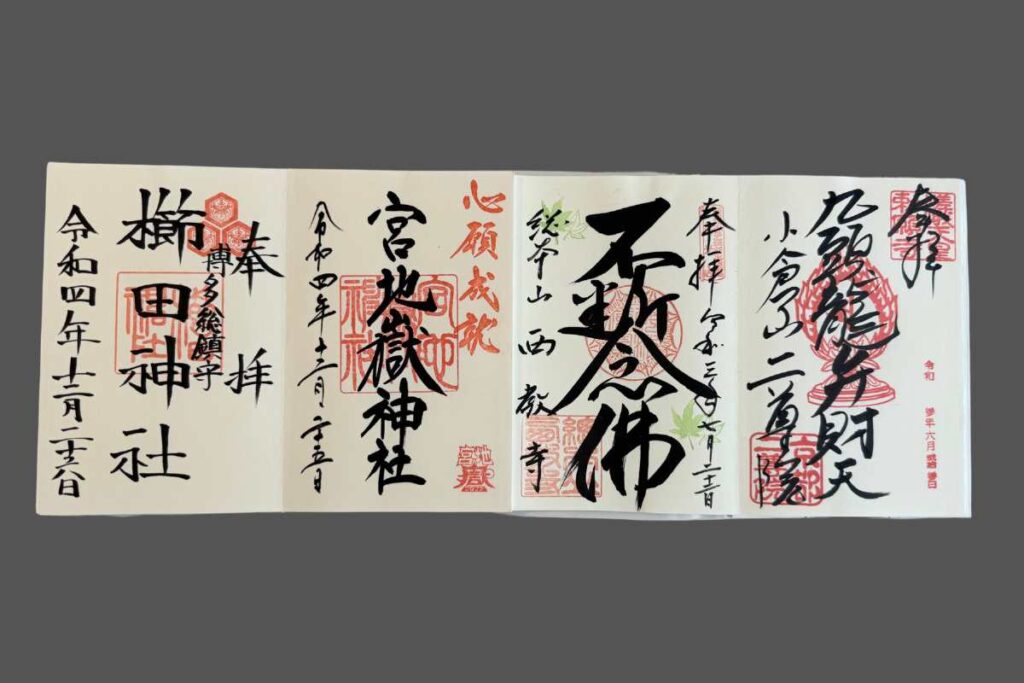
A Goshuincho containing both shrine (left pages) and temple (right pages) seals. Mixed use is generally acceptable unless otherwise specified.
However, in practice, some shrines or temples may decline to write in a Goshuincho that already contains seals from the other tradition. This is often out of respect for religious boundaries, especially in places where the separation of Shinto and Buddhism is strongly observed.
If you’re unsure or want to avoid any issues, it’s a good idea to carry two books—one for shrines and one for temples. Many experienced collectors take this approach for convenience and peace of mind.
Separating your books can also help keep your collection organized, especially if you’re visiting a large number of sites on both sides of the tradition.
If you’re still unsure, don’t worry—there’s no single “correct” way to use a Goshuincho.
Since the pages are blank, how you organize your Goshuin is entirely up to you.
For example, I personally use one book that mixes both shrines and temples, another just for shrines, and a third exclusively for temples. It’s not about choosing a “type” of book—it’s about how you choose to use it.
Forgot Your Book? No Problem
If you visit a shrine or temple without your Goshuincho, don’t worry—you can still receive a Goshuin. In many places, staff will offer you a pre-written version on a sheet of paper, known as a kakioki.
Simply explain at the counter: “I forgot my Goshuincho today…” and they may respond with something like, “We can give you one on paper,” or “Here’s a pre-written version.” Even if the temple doesn’t normally offer kakioki, they may kindly write one for you on a separate sheet.
Some shrines and temples also sell their original Goshuincho. If you find a design you love, this might be the perfect opportunity to purchase a new one and start a fresh collection.
If you receive a kakioki Goshuin on a separate sheet of paper, you can simply take it home and attach it into your Goshuincho using glue. Just open to the next available page and paste it neatly—many collectors do this without any issue.
If you’d prefer not to paste it in, that’s also perfectly fine. Some people keep their paper Goshuin in a dedicated folder or file, similar to a photo album. There are even special clear-pocket albums made just for storing kakioki-style Goshuin. It all comes down to how you’d like to preserve your memories.
Digital Goshuin and Helpful Apps
Modern technology is making Goshuin more accessible. Some temples, like Shinnyo-ji in Osaka, offer digital Goshuin via QR codes. These can be scanned with your smartphone and saved as beautiful, image-based keepsakes—especially useful if you’re not carrying a Goshuincho.
Apps like GoshuinGo are also helpful. They show nearby shrines, operating hours, English descriptions, and even seasonal Goshuin availability. Whether you’re planning a pilgrimage or a casual temple stroll, these tools enhance the experience.
Conclusion
Goshuin collecting is a beautiful blend of mindfulness, art, and cultural appreciation. Each seal tells the story of a place you visited, a moment you paused, and a tradition you joined—if only briefly.
By learning the proper way to receive and care for Goshuin, you’ll gain more than a souvenir. You’ll carry home a quiet memory of Japan’s spiritual world—one written in brush strokes and red ink, waiting to be opened again long after your journey ends.
